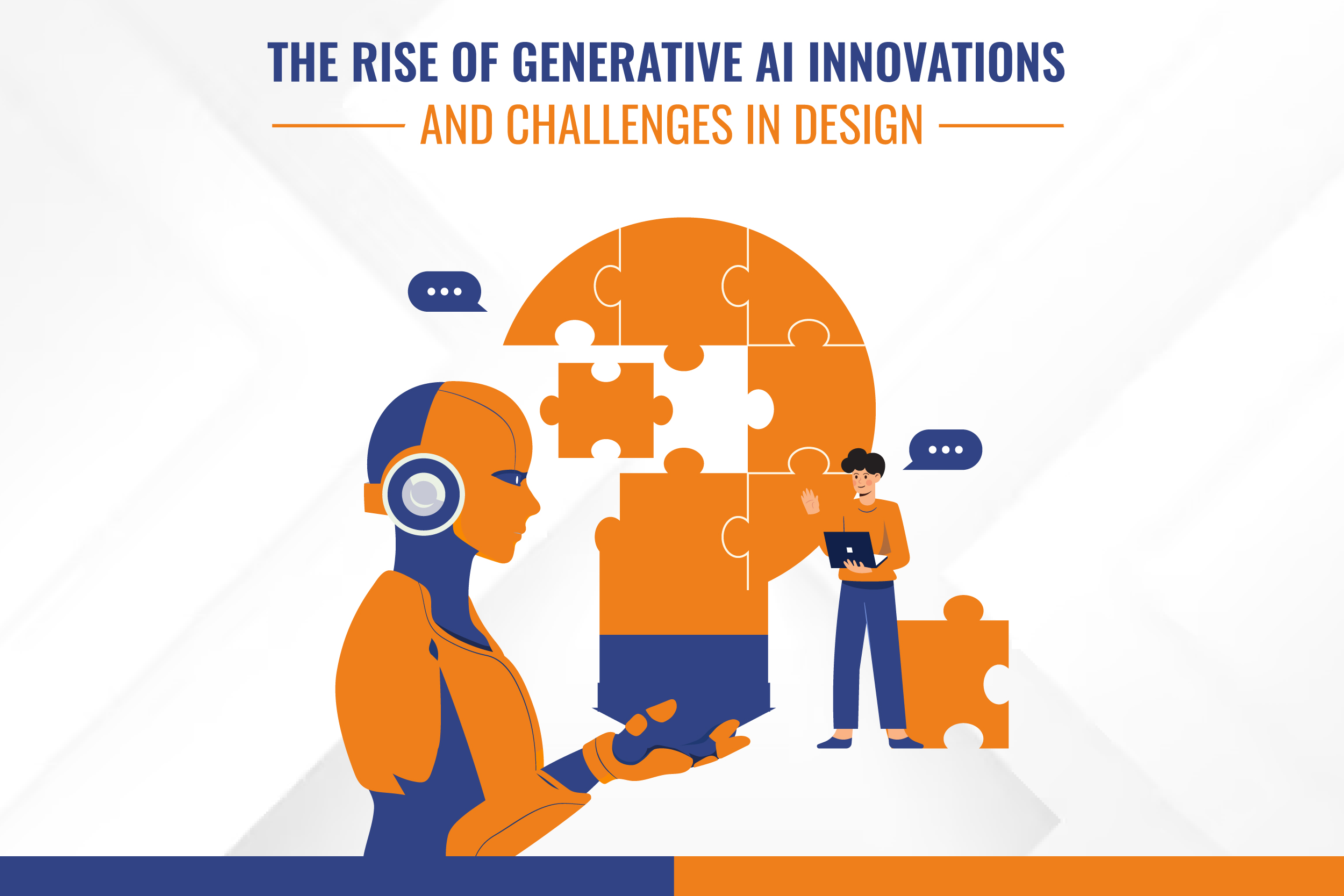
The Rise of Generative AI in Design Challenges and Innovations
In recent years, the landscape of design has been undergoing a profound transformation fueled by advancements in artificial intelligence (AI). Among these advancements, generative AI stands out as a disruptive force, reshaping the way designers approach their craft.
By leveraging machine learning algorithms, generative AI empowers designers to explore vast design possibilities, automate tedious tasks, and unlock new creative potentials. This article delves into the rise of generative AI in design, highlighting its challenges, innovations, and the impact it has on technical training programs and corporate environments.
Understanding Generative AI in Design
Generative AI refers to a subset of artificial intelligence techniques that involve training algorithms to generate new content, such as images, text, or even entire designs, based on a set of input data. Unlike traditional design methods, which rely heavily on human intuition and manual iteration, generative AI algorithms can analyze vast datasets, learn underlying patterns, and autonomously produce novel designs.
One of the most prominent applications of generative AI in design is in the field of architecture. Architects can use generative algorithms to explore countless design variations based on parameters such as site conditions, program requirements, and aesthetic preferences. These algorithms generate designs that not only meet functional criteria but also push the boundaries of creativity, often producing solutions that human designers might not have envisioned.
Challenges in Adopting Generative AI
The use of generative AI in design faces a number of obstacles despite its promise. One major obstacle is the requirement for technological know-how. Because of their complexity, generative AI systems call for specific expertise in data analysis, programming, and machine learning. Widespread adoption is hampered by the fact that many designers lack the corporate technical training required to fully utilize these tools.
Another challenge is the ethical implications of AI-generated designs. As algorithms autonomously generate designs, questions arise about authorship, ownership, and the role of human creativity. Designers must grapple with issues of intellectual property rights, attribution, and the potential for bias in AI-generated designs.
In addition, there are concerns about the impact of generative AI on the design process itself. Some designers worry that relying too heavily on algorithms may stifle creativity and lead to homogenized design solutions. Finding the right balance between human intuition and algorithmic automation is essential to maximizing the benefits of generative AI in design.
Innovations in Generative AI
Despite these challenges, innovators in the field are making significant strides in advancing generative AI capabilities. One area of innovation is in the development of user-friendly tools that democratize access to generative design techniques. Companies like Autodesk and Adobe are integrating generative AI features into their design software, allowing designers to harness the power of AI without extensive corporate technical training.
Another innovation is the use of generative adversarial networks (GANs) in design. GANs consist of two neural networks, a generator and a discriminator, which compete against each other to produce and evaluate designs. This adversarial process can lead to the creation of highly realistic and diverse design outputs, enabling designers to explore a broader range of possibilities.
Furthermore, researchers are exploring novel applications of generative AI in design, such as in the optimization of complex systems and the generation of personalized design solutions. For example, generative algorithms can be used to optimize the layout of urban environments for factors like traffic flow, energy efficiency, and quality of life, leading to more sustainable and livable cities.
Impact on Technical Training Programs
The rise of generative AI in design has significant implications for technical training programs. As AI becomes increasingly integrated into the design process, there is a growing demand for designers with proficiency in AI-related skills. Technical training courses and programs must adapt to equip aspiring designers with the knowledge and expertise needed to thrive in this evolving landscape.
Furthermore, collaboration between design schools and industry partners is essential for keeping relevant and up-to-date. Industry professionals can provide insights into the latest developments in generative AI and offer valuable mentorship and internship opportunities for students.
Impact on Corporate Environments
In corporate environments, the adoption of generative AI in design offers opportunities for increased efficiency, innovation, and competitiveness. Companies across various industries, from automotive to fashion, are leveraging generative AI to streamline design processes, accelerate product development, and create differentiated offerings.
Designers can use AI algorithms to generate design variations, perform parametric modeling, and even optimize designs for cost and performance metrics. This automation frees up designers to focus on higher-level creative tasks and innovation.
Moreover, generative AI enables companies to explore a broader range of design possibilities and iterate more quickly on ideas. By rapidly generating and evaluating design alternatives, companies can identify novel solutions and make data-driven decisions that lead to better products and services.
However, the adoption of generative AI also poses challenges for corporate design teams. Companies must invest in training programs to upskill existing designers and hire new talent with expertise in AI technologies. Additionally, there may be resistance to change from designers accustomed to traditional design methods, highlighting the importance of organizational change management and cultural transformation.
Final Thoughts
The emergence of generative AI in design signifies a fundamental change in the way designers approach their work. Designers may explore large design spaces, automate time-consuming processes, and unleash fresh creative potential by utilizing machine learning techniques. Despite these obstacles, pioneers are expanding generative AI capabilities and resolving these issues with notable success.
Technical training courses are adapting to equip aspiring designers with the necessary skills, while corporate environments are leveraging generative AI to drive efficiency and innovation. As generative AI continues to evolve, its impact on design will only grow, reshaping industries and opening up new possibilities for creativity and innovation.
